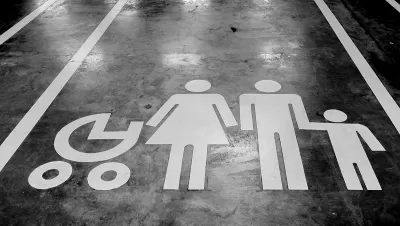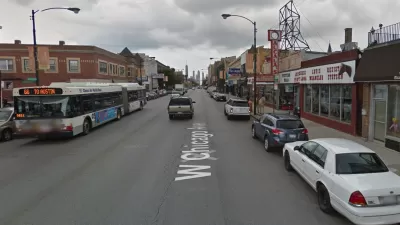Citizens and businesses owners are actively involved in modernizing parking policies and assets in San Diego in a district by district approach, writes San Diego parking guru Bill Keller.

In San Diego, old auto-oriented expectations, like free parking, die harder than in bigger denser cities like San Francisco and Chicago, writes downtown retailer-turned-parking-activist Bill Keller.
In San Diego, despite the growing population and a tightening supply, many locals still expect free parking – especially in beach communities. San Diego currently has about 5,700 metered spaces mostly charging a top rate of $1.25 per hour. Nearly all the metered spaces are in Uptown and Downtown where parking is a hot topic at neighborhood meetings.
Therefore, modernization of public parking management, particularly metered parking, has been slower and more incremental than in those bigger cities. The city has implemented a "community-up" district by district approach, creating Community Parking Districts. "This low-tech, neighborhood-up approach has become the hallmark of parking management in San Diego," writes Keller. It has empowered neighborhood residents and businesses to play a major role in setting parking policy. For example,
Since 2004, the Downtown Parking Management Group*, a volunteer board of residents and business members, has worked with City staff to improve utilization of street parking. An early pilot program targeted sections of East Village, Cortez Hill and the Marina District with very low meter usage . . .
During the pilot, for example, street parking in the Gaslamp Quarter remained at $1.25 per hour with a two-hour limit while several blocks of East Village from Eighth Ave to Park Blvd were converted to $1 per hour with a four-hour limit. East of Thirteenth, rates dropped to $.50 per hour with a nine-hour limit. This offered price sensitive workers and residents an option to walk a little and save.
The experiment worked. Over a two year period, meter utilization was up 106% and (despite the drop in rates) meter revenue was up 89%.
This community-based approach has resulted in a number of other incremental changes and refinements to metered parking which has both increased parking meter revenue and parking supply. More details are in the two part articles on UrbDeZine, with a third installment yet to come.
FULL STORY: Parking Management: San Diego Style (Part Two)

Alabama: Trump Terminates Settlements for Black Communities Harmed By Raw Sewage
Trump deemed the landmark civil rights agreement “illegal DEI and environmental justice policy.”

Planetizen Federal Action Tracker
A weekly monitor of how Trump’s orders and actions are impacting planners and planning in America.

The 120 Year Old Tiny Home Villages That Sheltered San Francisco’s Earthquake Refugees
More than a century ago, San Francisco mobilized to house thousands of residents displaced by the 1906 earthquake. Could their strategy offer a model for the present?

In Both Crashes and Crime, Public Transportation is Far Safer than Driving
Contrary to popular assumptions, public transportation has far lower crash and crime rates than automobile travel. For safer communities, improve and encourage transit travel.

Report: Zoning Reforms Should Complement Nashville’s Ambitious Transit Plan
Without reform, restrictive zoning codes will limit the impact of the city’s planned transit expansion and could exclude some of the residents who depend on transit the most.

Judge Orders Release of Frozen IRA, IIJA Funding
The decision is a victory for environmental groups who charged that freezing funds for critical infrastructure and disaster response programs caused “real and irreparable harm” to communities.
Urban Design for Planners 1: Software Tools
This six-course series explores essential urban design concepts using open source software and equips planners with the tools they need to participate fully in the urban design process.
Planning for Universal Design
Learn the tools for implementing Universal Design in planning regulations.
Clanton & Associates, Inc.
Jessamine County Fiscal Court
Institute for Housing and Urban Development Studies (IHS)
City of Grandview
Harvard GSD Executive Education
Toledo-Lucas County Plan Commissions
Salt Lake City
NYU Wagner Graduate School of Public Service





























